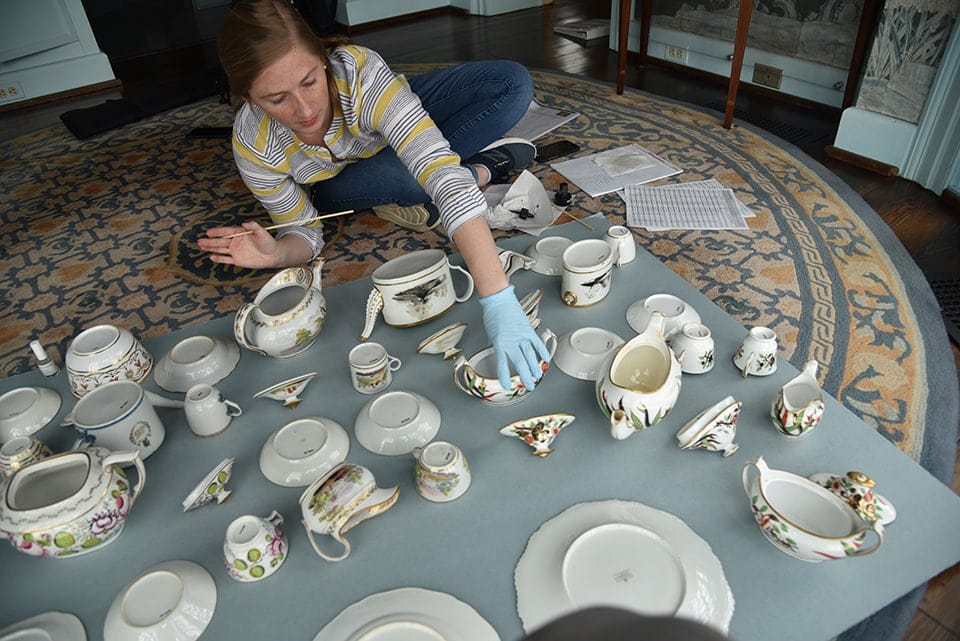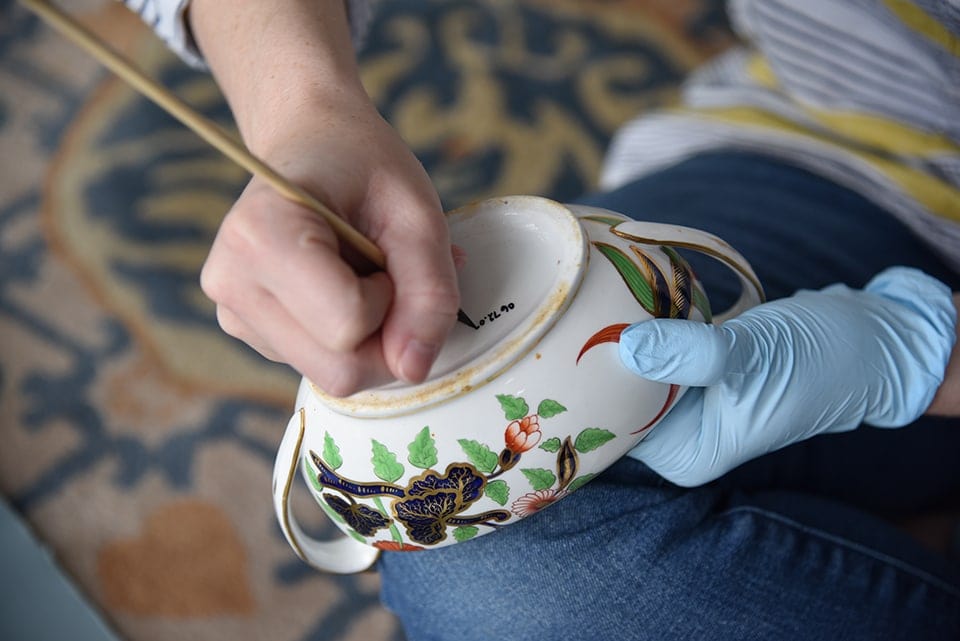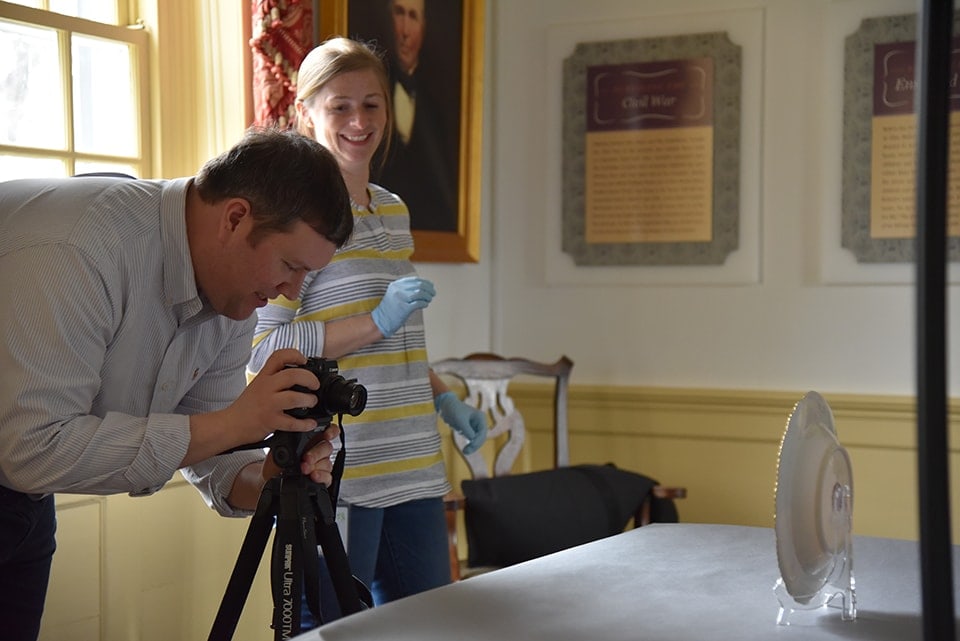Glen Burnie has been welcoming guests for centuries. There have been dinner parties, sleep overs, and holiday visits from friends and family. Today the house welcomes you; our museum family.
Everyone who enters the home brings purpose to the building and its interpretation. They also bring challenges for the collection. Bugs fly in when the doors open, spring pollen finds its way onto windowsills and mantles, and hands leave oil behind on whatever they touch.
Each winter, when the house is closed to the public, the collections team can assess how the building and its objects weathered this activity. It’s an opportunity to spend time in each room cleaning and conducting an inventory of the collection. This process takes time and a lot of patience.
Every cabinet is opened, and shelf emptied as objects are removed to be dusted and checked for any changes in condition. If there have been no condition changes, the object goes back on its shelf and we move on to the next piece. This year, however, we have added some additional tasks. Each object has been physically numbered and photographed.
When an object enters the collection, it is assigned a number that reflects the year it was purchased or given, its source, and its sequence within the acquisition. This number lets us file associated paperwork and catalog the object in our database. This winter we discovered that the objects in Glen Burnie had old numbers that were inconsistent with our current system and therefore disassociated from their catalog records. So, as each piece was dusted, we numbered them with their proper numbers.
There are three steps to this process. The first is to apply a coat of Paraloid B-72. This looks like clear nail-polish and acts as a barrier between the object and the inked numbers. The second step is to write the number on the B-72 layer after it has dried. We use a pointed skewer dipped in Higgins Black Magic ink to apply the number in a place that won’t be seen when the object is on display. The third and final step is to apply a top-coat of B-72 as a seal over the number so it won’t wear away. But beware! The inked number must be completely dry before the top layer is applied, or it will smear, and we have to start all over again.
Photographing the objects is just as important as numbering them. Not only does it allow us to share digital content with you, but it provides an invaluable visual record. We can use the image to figure out if damage or deterioration to a piece is new or pre-existing and piece together records for some of our lingering mystery objects.
Numbering and photographing the objects in addition to dusting and inventorying tripled the amount of time it took to clean Glen Burnie this year. But now that these tasks are done, next winter’s cleaning should be done in a snap!


